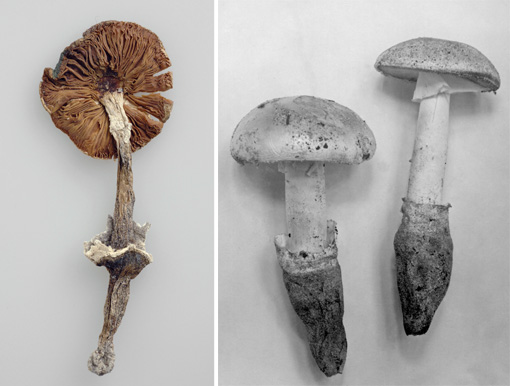One — and only one — type specimen
Today's International Code of Botanical Nomenclature (ICBN) dictates that there must be a single type specimen for any taxon. The aim of this requirement is to reduce confusion about the proper application of the name: in many cases when there are multiple type specimens, they have later been found to represent more than one species. Ideally, when a species is described, a single holotype is designated by the author. If no holotype exists, repairs are needed: A lectotype may be designated from among several specimens mentioned by the original author. Failing that, a modern author can designate a neotype, a specimen of the same species not examined by the original author.
During his research on Amanita cylindrispora Beardslee, R.E. Tulloss found that any of several different syntype specimens — one here at CUP, two in MICH, and more at several other herbaria — might be considered the type. The syntypes are the original specimens from which Beardslee described the species; the Code requires that one be formally designated the type. Tulloss (2005) selected CUP 25548 as the lectotype for Amanita cylindrispora. He based his choice on the presence of an annotation slip by Beardslee that was clearly marked "part of type," and the well-preserved condition of the specimen. Now A. cylindrispora is properly typified: every fungal taxon properly has either a holotype, a neotype, or a lectotype.

